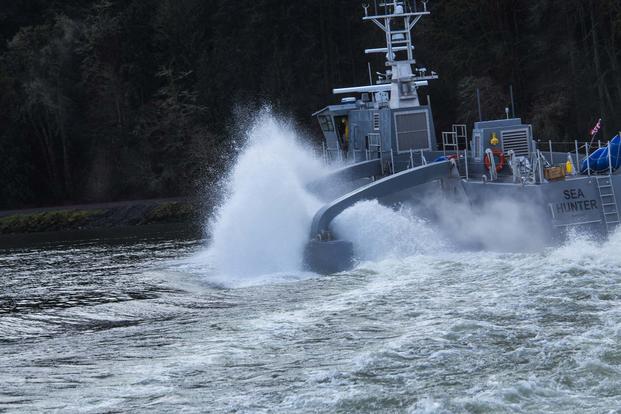A 132-foot-long self-driving ship made history by traveling from San Diego to Hawaii's Pearl Harbor and back again without sailors aboard to guide its way.
The Sea Hunter, an autonomous trimaran developed for submarine hunting and counter-mine missions, traveled thousands of miles between San Diego and Pearl Harbor last month. Naval News was first to report on the ship's breakthrough voyage.
Crew members from an escort vessel boarded the Sea Hunter for short durations to check electrical and propulsion systems, according to a press release from Leidos, a science and technology company that designed and built the Sea Hunter. For most of the voyage, though, the ship was unmanned.
"The recent long-range mission is the first of its kind and demonstrates to the U.S. Navy that autonomy technology is ready to move from the developmental and experimental stages to advanced mission testing," Gerry Fasano, the defense group president at Leidos, said in the release.
The Office of Naval Research (ONR), which led the test transit to and from Hawaii, declined a request for an interview, citing operational security concerns.
Dan Brintzinghoffer, with Leidos' maritime systems division, said the idea isn't to replace ships with vehicles like Sea Hunter, but to free up personnel aboard bigger vessels to take on more complex tasks.
"Autonomous vehicles will likely focus on the 'dull, dirty or dangerous' missions sets and could operate around the world's oceans," Brintzinghoffer said. "For example, an autonomous vessel can conduct hydrographic survey missions, freeing manned ships to accomplish other missions."
When the Navy christened the Sea Hunter in 2016, officials said it could change the nature of U.S. maritime operations. It uses a suite of navigation tools and automated lookouts that allow it to safely sail near other vessels in any weather or traffic conditions during the day or night.
The Defense Advanced Research Projects Agency led the design and construction of the vessel and then teamed with ONR for open-water testing.
The project was fully transferred to ONR in early 2018, said Bob Freeman, an agency spokesman, when it moved into a "much more security-sensitive area of research."
Leidos is currently building a second Sea Hunter hull, Brintzinghoffer said. The company was awarded a $43 million contract to start construction on the ship that will build on some of the first Sea Hunter's capabilities, Leidos announced last month.
-- Gina Harkins can be reached at gina.harkins@military.com. Follow her on Twitter @ginaaharkins.










